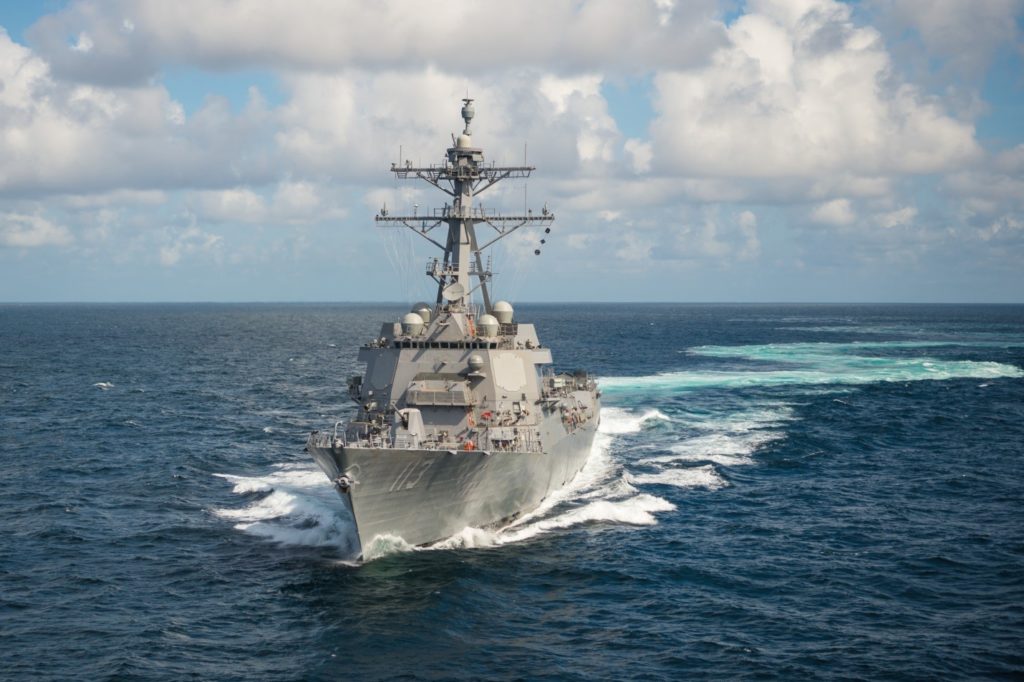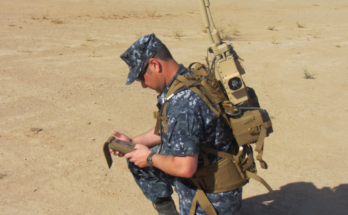
On June 13, the Senate Armed Services Committee (SASC) voted 22-3 to advance its version of the National Defense Authorization Act (NDAA) to the Senate floor. Set against a backdrop of increasing global threats, the legislation aims to exceed Fiscal Responsibility Act defense spending caps by funneling an additional $25 billion into the Pentagon’s coffers in FY25.
An executive summary of the bill underscores the threats facing the U.S., including challenges from China, Russia, Iran, North Korea, and transnational criminal organizations. “To deter and overcome these threats, the U.S. military and America’s men and women in uniform must have the resources they need to keep the Nation safe,” the summary states.
The bill authorizes $923.3 billion for national security in FY25, which includes $911.8 billion within the NDAA and another $11.5 billion that falls outside of the jurisdiction of the armed services committees. The legislation recommends $878.4 billion for the Pentagon, which is a substantial increase from the $848.8 billion request. Another $33.4 billion is allocated for nuclear programs in the Department of Energy, slightly below the $34 billion request, as well as $11.5 billion for defense-related activities outside of the Department of Defense, which is in line with the administration’s request.
Funding tables initially indicate an increase of over $28 billion for defense, but the summary of the bill states the actual topline increase is $25 billion (the difference between those figures appears to stem from items that fall outside of the committee’s jurisdiction). The $25 billion increase for the Pentagon was achieved through an amendment by Sen. Roger Wicker (R-MS), who had previously advocated for even larger spending increases in FY25 and beyond. The increase would help fund additional warships, aircraft, vehicles, and weapons.
Navy
For the Navy, the bill adds $1.1 billion for a second Virginia class submarine and $1.4 billion for a third DDG 51 destroyer. The House Armed Services Committee also recommended adding a second sub, but it did not alter the DDG 51 request. Unlike the House, the Senate committee retained funding for the Navy’s Constellation class frigate, but use of construction funds is restricted until the Navy completes the design of the ship. Similarly, the bill blocks construction of the Marine Corps’ new Landing Ship Medium until that design has been finalized.
The bill authorizes a block buy of up to 37 CH-53K helicopters and multiyear procurement of CH-53K engines, and it removes funding requested to shut down the E-2D production line. The committee authorizes $252 million for the nuclear-armed sea-launched cruise missile (SLCM-N) and requires a competitive demonstration of extra-large underwater vehicles (XLUUV).
Air Force
The Air Force sees the addition of six F-15EX fighter jets and five HH-60W Combat Rescue Helicopters. The F-35 program is funded at the requested level of 68 aircraft across the DoD, countering the HASC’s cut of 10 aircraft across the services and the House Appropriations Committee’s proposal to add eight aircraft to the DoD budget.
The SASC recommends a funding reduction for the C-40 fleet expansion effort, and contract delays led to decreased funding in the bill for the Survivable Airborne Operations Center (SOAC) and the VC-25B Air Force One replacement.
Senators partially signed off on the Air Force’s request to retire portions of its legacy fleet. Specifically, the Senate’s version of the NDAA approves retirement of 56 A-10s, 65 F-15C/Ds, and 11 F-16C/Ds, but it blocks the divestment of 26 F-15Es and 32 F-22 fighters. Further, lawmakers said the E-3 Airborne Warning and Control System (AWACS) fleet must remain in service until its replacement, the E-7, is ready, or until the Air Force can certify that there will be no lapse in capability if the E-3s are divested.
The bill calls for a plan to transfer retired Air Force UH-1N helicopters to the Army as an interim solution for replacing aircraft operating on the Kwajalein Atoll. It also mandates restoring nuclear capabilities across the entire B-52 bomber fleet and requires the submission of a tanker modernization plan alongside next year’s FY26 budget request.
The Space Force is authorized to create a program executive office for a space-based air and ground moving target indicator capability, and the bill calls for a briefing on space-based sensing capabilities for detecting and tracking hypersonic threats.
Army
For the Army, the Senate bill boosts funding for combat aircraft, armored fighting vehicles, munitions, long-range fires, and short-range fires. It also provides additional resources to accelerate fielding of the Infantry Squad Vehicle and adds funding to sustain the UH-72A Lakota helicopter fleet. The bill directs Army leaders to submit reports on various programs, including network modernization, Future Vertical Lift (FVL), AH-64 Apache upgrades, and the Improved Turbine Engine Program (ITEP), among others. Of note, the legislation does not call for an Army drone crops, as proposed in the House version of the bill.
The bill also addresses the growing threat of drones on the battlefield and recommends establishing a counter-unmanned aerial systems (c-UAS) task force to review guidance on c-UAS activities. Lawmakers also want service leaders to brief them on their respective c-UAS efforts, and the bill specifically increases c-UAS research and testing funding for the Army and its university research partners.
Lawmakers will eventually meet to negotiate the differences between the House and Senate authorization bills. Even if the Senate’s proposal for a topline increase makes it into the final negotiated version of the bill, the Pentagon won’t receive any additional funding unless it’s provided by congressional appropriators. The House appropriations bill was marked up in line with the administration’s request, but the Senate Appropriations Committee hasn’t released its version of the FY25 defense spending bill. Implementing a $25 billion increase would require either passing new legislation to eliminate the Fiscal Responsibility Act spending limits or funneling the extra money through an emergency supplemental bill that would be immune from the caps.
As editor of International Military Markets, North America, Shaun has cultivated a deep understanding of the vast defense markets in the United States and Canada. Shaun's perspective on defense procurement and budget issues has been cited in a variety of defense periodicals, including Defense News and National Defense Magazine. Further, Shaun played an integral role in the development of Forecast International's U.S. Defense Budget Forecast product, which offers an unprecedented level of insight into the Pentagon's acquisition budget. In addition to providing original analytical content for the U.S. Defense Budget Forecast, Shaun oversees an internal defense budget forecasting process involving Forecast International's team of skilled systems analysts following release of the DoD's annual budget request. Shaun is also in charge of managing Forecast International's Weapons Inventory database.




